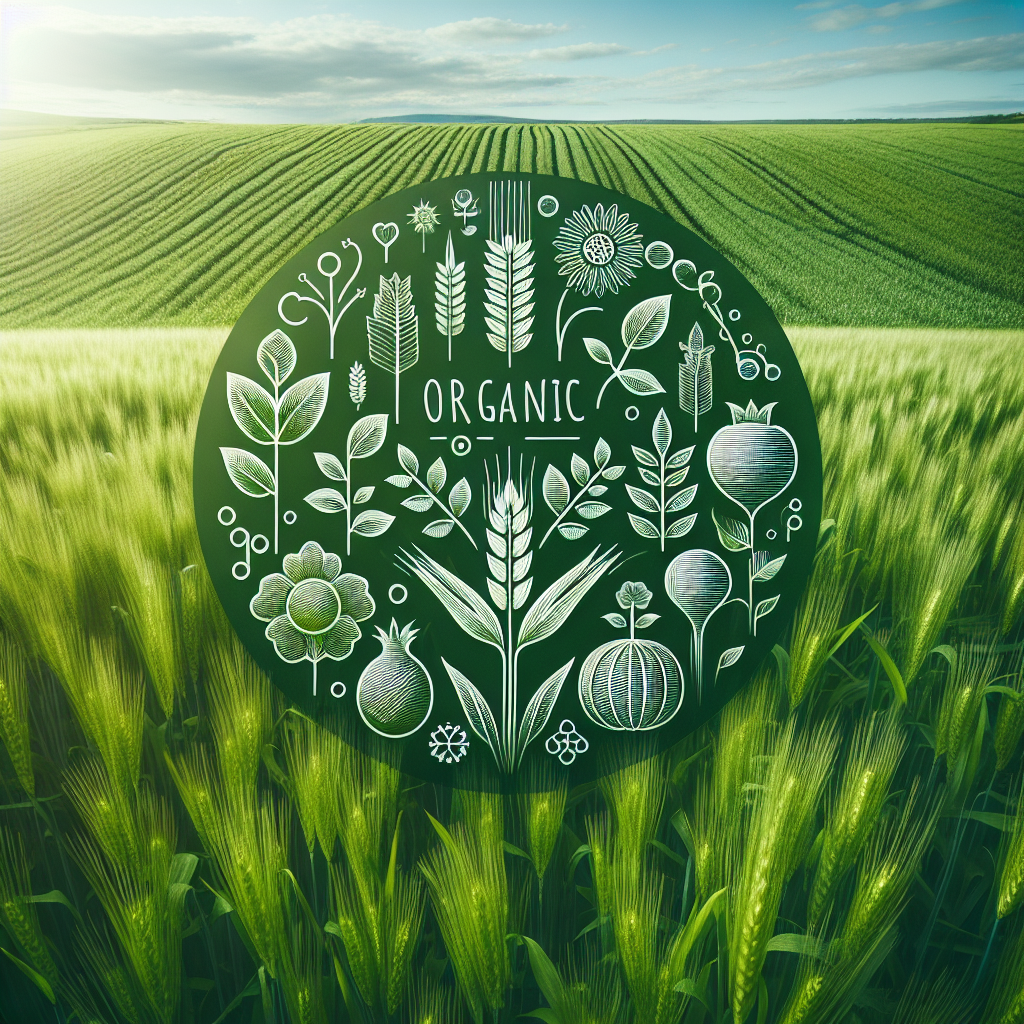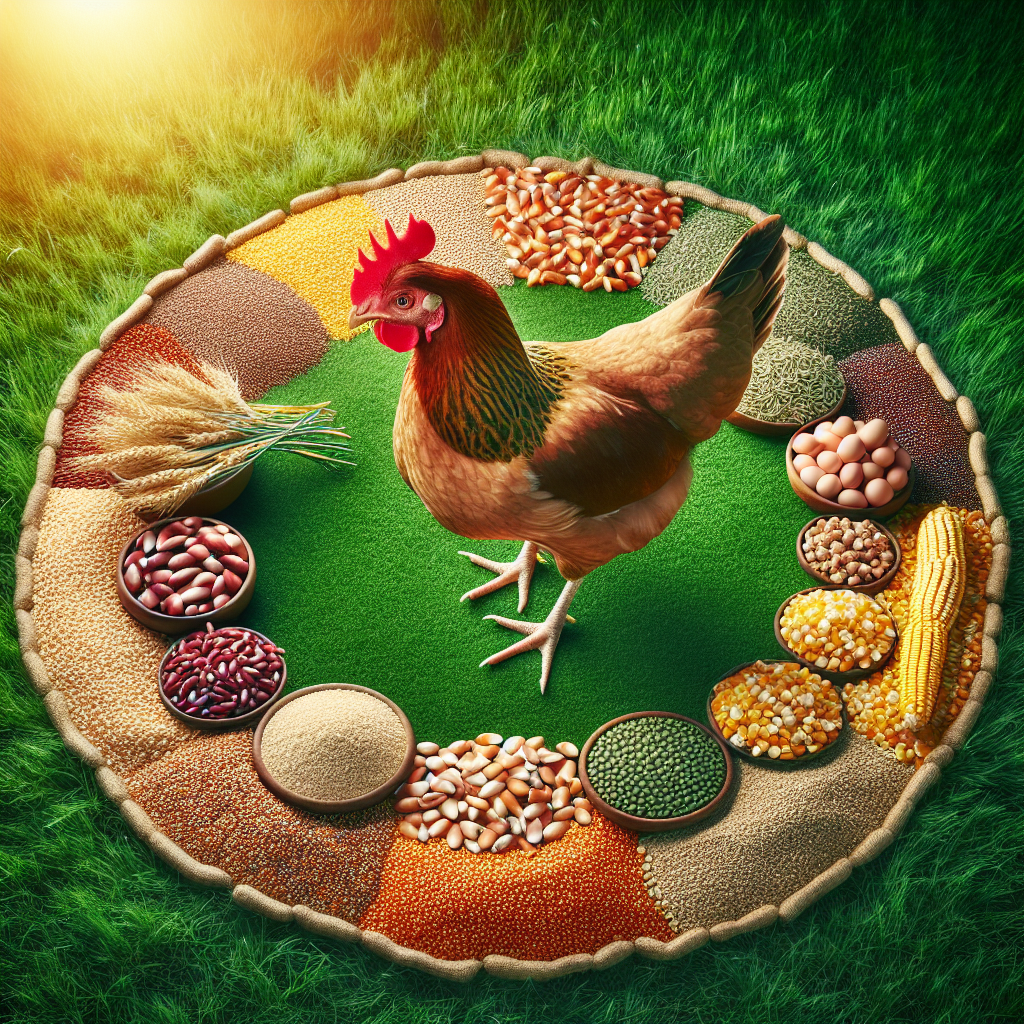Imagine a world where sustainable agricultural practices not only benefit our health, but also help preserve the environment. In this article, we will explore the impact of organic feed practices on the environment and compare them to non-organic production. By delving into the intricate details of these practices, we aim to shed light on the positive effects organic feed has on our planet. Get ready to discover how sustainable farming methods can make a significant difference in the way we produce food while minimizing our ecological footprint.
Introduction
Organic feed practices have gained significant attention in recent years due to their potential impact on the environment. This article aims to explore and compare the environmental effects of organic feed practices and non-organic production methods. By examining various aspects such as soil quality, water conservation, impact on biodiversity, and greenhouse gas emissions, we can gain a comprehensive understanding of the environmental implications of these two approaches. Understanding these impacts can help individuals make informed choices about their food consumption and production practices.
Defining Organic Feed Practices
Certification criteria
Organic feed practices are regulated by certification criteria established by various organic agriculture organizations. These criteria ensure that the feed is produced using methods that prioritize sustainability and environmental stewardship. Organic feed is typically sourced from crops that are grown without the use of synthetic pesticides, herbicides, or genetically modified organisms (GMOs). Additionally, organic feed must be free from growth hormones and antibiotics.
Types of organic feed
Organic feed encompasses a wide range of products, including grains, forages, and protein sources. Grains such as corn, barley, and wheat are commonly used in organic feed production. Forages, such as alfalfa and clover, provide essential nutrients to grazing livestock. Protein sources like soybeans, sunflower seeds, and fishmeal are also utilized in organic feed to ensure adequate protein content in animal diets.
Non-Organic Production Methods
Use of synthetic fertilizers
In non-organic production methods, synthetic fertilizers are extensively used to enhance crop yields. These fertilizers are often made from fossil fuel-based chemicals and can have detrimental impacts on the environment. When applied in excessive amounts, synthetic fertilizers can contribute to water pollution through runoff. Moreover, the production and use of synthetic fertilizers are energy-intensive processes, contributing to greenhouse gas emissions.
Pesticide application
Non-organic production methods rely heavily on pesticide application to control pests and diseases. These pesticides can have adverse effects on the environment, including the contamination of water sources through runoff. Additionally, prolonged pesticide use can lead to the development of pesticide-resistant pests, disrupting the delicate balance of ecosystems.
Genetically modified organisms (GMOs)
Non-organic production often relies on the use of genetically modified organisms (GMOs) for improved crop traits and higher yields. However, GMOs have raised concerns regarding their impact on biodiversity and ecosystems. Cross-pollination between GMO crops and wild plant species can lead to genetic contamination and the loss of native plant diversity.
Antibiotics and growth hormones
Non-organic production methods frequently employ the use of antibiotics as growth promoters and disease preventatives in livestock. The overuse of antibiotics contributes to the emergence of antibiotic-resistant bacteria, which poses a significant threat to human and animal health. Growth hormones are also commonly used to enhance livestock growth rates, but their use has raised concerns about potential hormonal disturbances and environmental pollution.
Environmental Impact of Organic Feed Practices
Reduced soil erosion
Organic feed practices prioritize soil health and fertility. By avoiding the use of synthetic chemicals, organic farmers promote the natural vitality of the soil. The incorporation of organic matter and the practice of crop rotation in organic farming enhance soil structure and reduce the risk of erosion. Consequently, organic feed practices help to maintain the integrity and productivity of agricultural soils, preventing soil erosion and degradation.
Water conservation
Organic feed practices promote water conservation through various sustainable methods. Organic farmers prioritize the preservation of water resources by implementing practices such as efficient irrigation techniques, water recycling, and the use of cover crops. These practices minimize water wastage and help maintain adequate water levels in streams, rivers, and groundwater sources.
Biodiversity preservation
Organic feed practices support biodiversity preservation by promoting natural ecosystem functions. Organic farming techniques, such as the maintenance of diverse crop rotations, the use of natural pest control methods, and the preservation of natural habitats, provide essential habitats for wildlife species. This biodiversity-rich environment allows for the natural regulation of pests and diseases, reducing the need for synthetic pesticides and fostering healthier ecosystems.
Reduced greenhouse gas emissions
Organic feed practices contribute to the reduction of greenhouse gas emissions. The avoidance of synthetic fertilizers and pesticides decreases the energy-intensive processes involved in their production. Additionally, organic farming practices encourage the sequestration of carbon dioxide from the atmosphere into the soil, mitigating climate change. These factors contribute to a lower carbon footprint for organic feed production compared to non-organic methods.
Environmental Impact of Non-Organic Production Methods
Soil degradation
Non-organic production methods can lead to soil degradation and loss of soil fertility. The excessive use of synthetic fertilizers and pesticides disrupts the natural balance of soil microorganisms, impairing soil health. This can result in decreased nutrient availability and reduced soil structure, leading to soil erosion, compaction, and reduced crop productivity.
Water pollution
The use of synthetic fertilizers and pesticides in non-organic production methods can contribute to water pollution. When applied in excessive amounts or during periods of heavy rainfall, these chemicals can leach into water bodies or be carried off through runoff. This contamination can harm aquatic ecosystems, disrupt water quality, and affect the health of aquatic organisms.
Loss of biodiversity
Non-organic production practices often result in the loss of biodiversity. The use of synthetic chemicals, GMOs, and monoculture cropping systems reduces the diversity of plant and animal species. This loss of biodiversity hampers ecosystem resilience and disrupts vital ecological processes such as pollination, natural pest control, and nutrient cycling.
Increased greenhouse gas emissions
Non-organic production methods contribute to increased greenhouse gas emissions. The manufacturing and application of synthetic fertilizers, as well as the use of machinery and transportation in industrial farming, require significant energy resources. These activities release greenhouse gases such as carbon dioxide, nitrous oxide, and methane, contributing to climate change.
Comparing Soil Quality
Organic soil health
Organic feed practices prioritize soil health and aim to build fertile and resilient soils. The use of organic matter, such as compost and animal manure, enhances soil structure, water retention, and nutrient availability. This promotes the growth of beneficial microorganisms, improving the overall health and productivity of the soil. Organic soil is typically rich in organic carbon, providing a long-term storage solution for carbon sequestration.
Non-organic soil degradation
Non-organic production methods can lead to soil degradation over time. The heavy reliance on synthetic fertilizers and pesticides disrupts the natural soil ecosystem, negatively impacting soil microorganisms and reducing soil fertility. Inadequate soil management practices, such as excessive tillage and nutrient runoff, further contribute to soil degradation, leading to decreased agricultural productivity and increased erosion risks.
Water Conservation and Pollution
Organic farming practices
Organic farming practices prioritize water conservation through various strategies. Efficient irrigation techniques, such as drip irrigation and mulching, minimize water wastage, ensuring that water is used more effectively. Additionally, the use of cover crops helps retain soil moisture and prevents soil erosion, minimizing water runoff and preserving water quality.
Chemical runoff in non-organic farming
Non-organic farming practices can lead to chemical runoff, which contributes to water pollution. Synthetic fertilizers and pesticides, when applied excessively or during heavy rainfall, can easily wash off the fields and enter nearby water bodies. This chemical runoff poses risks to aquatic ecosystems, drinking water sources, and the overall health of aquatic organisms.
Impact on Biodiversity
Organic farming and wildlife habitats
Organic farming practices support wildlife habitats and help preserve biodiversity. The emphasis on maintaining diverse crop rotations, preserving natural habitats, and providing suitable forage for wildlife creates ideal conditions for many species to thrive. Organic farms act as refuges for beneficial insects, birds, and other wildlife, promoting a healthy and balanced ecosystem.
Harmful effects of non-organic farming on ecosystems
Non-organic farming methods have negative effects on ecosystems and biodiversity. The extensive use of pesticides, GMOs, and monoculture cropping systems diminishes the availability of food and shelter for wildlife species. This loss of biodiversity disrupts ecological balance, making ecosystems more susceptible to invasive species, pests, and diseases.
Effects on Greenhouse Gas Emissions
Organic farming and carbon sequestration
Organic farming practices contribute to carbon sequestration, thus reducing greenhouse gas emissions. By avoiding the use of synthetic fertilizers and promoting the addition of organic matter to the soil, organic farmers increase the organic carbon content in agricultural soils. This sequesters carbon dioxide from the atmosphere, mitigating climate change by reducing the overall concentration of greenhouse gases.
Non-organic farming and carbon footprint
Non-organic farming methods contribute to a larger carbon footprint compared to organic practices. The production and application of synthetic fertilizers, use of machinery, and reliance on fossil fuels for energy-intensive processes all result in increased greenhouse gas emissions. Additionally, the cultivation of GMO crops often requires high-energy inputs, further contributing to the carbon footprint associated with non-organic production methods.
Conclusion
In conclusion, organic feed practices have a substantially positive impact on the environment compared to non-organic production methods. Organic feed practices prioritize sustainability, soil health, water conservation, biodiversity preservation, and reduced greenhouse gas emissions. By avoiding the use of synthetic chemicals, GMOs, and growth hormones, organic feed practices help promote the overall health of ecosystems and reduce the negative environmental impacts associated with non-organic farming. Making informed choices about our food consumption and supporting organic feed practices can contribute to a healthier planet for future generations.




